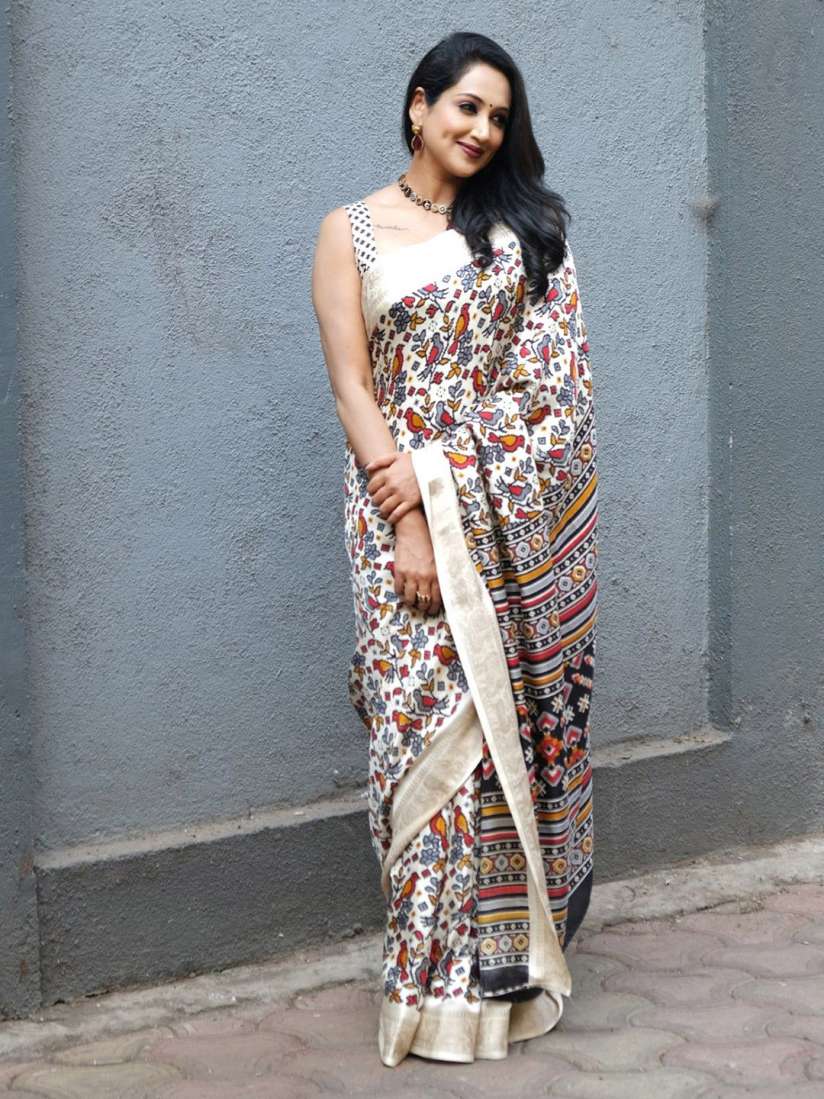Ikat Pashmina sarees represent the epitome of luxury and craftsmanship, combining the exquisite Pashmina wool from Kashmir and the intricate Ikat dyeing technique. These sarees are a testament to India’s rich textile heritage, revered globally for their elegance and cultural significance. With a history steeped in tradition and a market that spans continents, Ikat Pashmina sarees have evolved to become a coveted fashion statement, appealing to a wide audience from royalty to modern fashion enthusiasts.
Understanding Ikat and Pashmina
Ikat Weaving Technique
The Ikat weaving technique, derived from the Indonesian word ‘Mengikat’ meaning ‘to tie,’ involves a meticulous process of tie-dyeing the yarns before weaving them into fabric. This labor-intensive method allows artisans to create intricate patterns and designs that are distinctly geometric and vibrant. There are three main types of Ikat: warp, weft, and double Ikat, with the latter being the most complex and time-consuming. This process is predominantly seen in states like Odisha, Gujarat, and Andhra Pradesh. For instance, the town of Pochampally in Andhra Pradesh is renowned for its double Ikat designs, characterized by intricate geometric patterns and a vibrant palette of colors.
Pashmina: The Fabric of Royals
Pashmina, often termed the ‘soft gold’ of Kashmir, is derived from the fine wool of the Changthangi goat found at high altitudes in the Himalayas. Known for its softness, warmth, and delicate texture, Pashmina has been a symbol of luxury for centuries. This fabric is not only warm and lightweight but also possesses a natural sheen, making it a favorite for high-end fashion. The global demand for Pashmina is significant, with exports contributing approximately $80 million to India’s economy annually.
Craftsmanship and Production
Regions of Production
Key regions in India known for producing Ikat Pashmina sarees include the valleys of Kashmir for Pashmina and various parts of Odisha, Gujarat, and Andhra Pradesh for Ikat weaving. These regions have cultivated a legacy of craftsmanship, passed down through generations, ensuring the preservation of this traditional art form. For example, the Bargarh district in Odisha is famous for its unique Bandha Ikat sarees, known for their curvilinear and floral designs, reflecting the local culture and artistic expression.
The Process
The production of an Ikat Pashmina saree is a complex process that begins with the selection of the finest Pashmina yarn. The yarn is tie-dyed using natural or synthetic dyes, following the Ikat technique. This dyed yarn is meticulously woven on a handloom to create the saree, with each step requiring precision and skill. The production of a single saree can take anywhere from two weeks to a month, depending on the intricacy of the design and the dyeing process.
Design and Aesthetic
Patterns and Colors
Ikat Pashmina sarees are celebrated for their diverse patterns, ranging from bold geometric shapes to intricate floral motifs. The color palette is equally varied, often featuring a combination of vibrant and subtle hues that enhance the saree’s visual appeal. The use of natural dyes not only adds to the fabric’s allure but also speaks to the eco-friendly practices of the artisans. For instance, artisans from Sambalpur, Odisha, often use natural dyes derived from flowers, leaves, and roots to achieve a vibrant yet sustainable color palette.
Blending Tradition with Modernity
While traditional patterns remain popular, contemporary designers incorporate modern motifs and color schemes to cater to a younger audience. This fusion of old and new has broadened the appeal of Ikat Pashmina sarees, making them suitable for various occasions, from weddings to casual gatherings. Designers like Sabyasachi Mukherjee and Ritu Kumar have showcased Ikat Pashmina sarees in their collections, highlighting the versatility and timeless appeal of these fabrics.
Market and Popularity
Demand and Export
The demand for Ikat Pashmina sarees extends beyond India, with significant markets in the United States, Europe, and the Middle East. The rise of e-commerce platforms has facilitated the global reach of these sarees, allowing artisans and sellers to connect with customers worldwide. The global luxury market for Pashmina products is expected to grow at a CAGR of 8% over the next five years, driven by increasing consumer interest in sustainable and ethically sourced fashion.
Price Range and Affordability
The price of Ikat Pashmina sarees varies widely based on the intricacy of the design, the quality of the Pashmina, and the reputation of the artisan or brand. While a basic Ikat Pashmina saree might start at around INR 15,000 (approximately USD 200), a high-end, custom-made piece can cost upwards of INR 100,000 (approximately USD 1,300). This price range makes Ikat Pashmina sarees both accessible to a broader audience and exclusive enough to retain their luxurious appeal.
Caring for Ikat Pashmina Sarees
Maintenance Tips
To maintain the beauty and longevity of Ikat Pashmina sarees, it is recommended to dry clean them. Avoid using harsh detergents or washing machines, as they can damage the delicate Pashmina fibers and the intricate Ikat patterns. Storing the sarees in a cool, dry place and away from direct sunlight will prevent discoloration and deterioration of the fabric. Regularly airing the sarees and avoiding contact with perfumes or deodorants can also help preserve their natural sheen and softness.
Ikat Pashmina sarees are more than just garments; they are a celebration of India’s cultural heritage and artisanal excellence. As the world of fashion continues to evolve, the allure of these sarees remains timeless. By supporting artisans and embracing sustainable practices, we can ensure the preservation of this unique art form for future generations.

